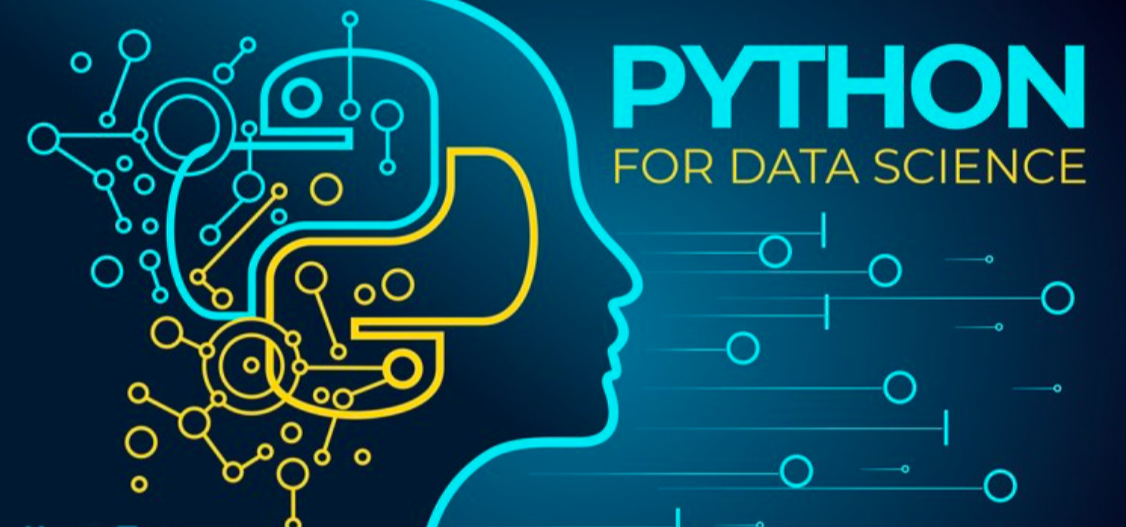Python has emerged as the preferred programming language for data science due to its versatility, readability, and a vast ecosystem of libraries and tools tailored for data analysis, machine learning, and visualization. Python for data science represents a powerful combination that empowers professionals to extract valuable insights from data, make informed decisions, and drive innovation across various industries. In this comprehensive article, we delve into the world of Python for data science, exploring its significance, core libraries, applications, and its role in shaping the future of data-driven decision-making.

Python for Data Science: Unlocking the Power of Data
The Significance of Python in Data Science
Python’s popularity in the field of data science can be attributed to several key factors:
- Versatility: Python is a general-purpose programming language, making it adaptable for a wide range of tasks beyond data analysis. This versatility allows data scientists to seamlessly integrate data analysis with other components of a project or workflow.
- Readability: Python’s clean and easily readable syntax makes it an ideal choice for data professionals, enabling them to focus on the logic of their analysis rather than wrestling with complex code.
- Extensive Libraries: Python boasts a rich ecosystem of libraries and frameworks dedicated to data science, including NumPy, pandas, Matplotlib, Seaborn, Scikit-Learn, and TensorFlow. These libraries simplify data manipulation, visualization, and machine learning tasks.
- Active Community: Python has a vibrant and active community of developers and data scientists. This community support translates into a wealth of resources, tutorials, and forums, making it easier for learners to acquire and expand their data science skills.
Key Libraries and Tools for Python in Data Science
- NumPy: NumPy is the foundation of numerical computing in Python. It provides support for large, multi-dimensional arrays and matrices, along with a collection of mathematical functions to operate on these arrays efficiently.
- pandas: pandas is a data manipulation library that excels in data cleaning, transformation, and analysis. It offers data structures like DataFrames and Series, making it easy to work with structured data.
- Matplotlib and Seaborn: These libraries are essential for data visualization. Matplotlib provides extensive customization options for creating static and interactive plots, while Seaborn simplifies the creation of visually appealing statistical graphics.
- Scikit-Learn: Scikit-Learn is a powerful machine learning library in Python. It offers a wide array of algorithms for classification, regression, clustering, dimensionality reduction, and model evaluation.
- TensorFlow and PyTorch: These deep learning libraries enable data scientists to build and train complex neural networks for tasks such as image recognition, natural language processing, and reinforcement learning.
Applications of Python in Data Science
Python’s versatility extends to a myriad of data science applications across various domains:
- Business Analytics: Python helps organizations analyze customer behavior, optimize operations, and make data-driven decisions for strategic growth.
- Healthcare: Python is instrumental in processing and analyzing medical data, enabling disease prediction, drug discovery, and personalized treatment plans.
- Finance: Financial institutions use Python for risk assessment, algorithmic trading, fraud detection, and portfolio optimization.
- Marketing and Customer Insights: Python assists in customer segmentation, recommendation systems, A/B testing, and sentiment analysis of social media data.
- Natural Language Processing (NLP): Python libraries like NLTK and spaCy facilitate text analysis, sentiment analysis, and language translation.
- IoT and Sensor Data: Python is used for real-time data analysis in IoT applications, helping monitor and control smart devices.
Python’s Role in Shaping the Future of Data-Driven Decision-Making
As data continues to proliferate across industries, Python’s role in shaping the future of data-driven decision-making cannot be overstated:
- Democratizing Data: Python’s ease of use and accessibility democratizes data analysis, enabling professionals from diverse backgrounds to harness the power of data for informed decision-making.
- Automation and Efficiency: Python’s automation capabilities streamline data processing tasks, reducing manual labor and improving efficiency in data analysis workflows.
- Advancements in AI and Machine Learning: Python remains at the forefront of AI and machine learning research, fostering innovations in natural language processing, computer vision, and autonomous systems.
- Bridging the Gap: Python bridges the gap between data scientists, domain experts, and decision-makers by providing tools for effective communication and visualization of data-driven insights.
Conclusion
Python for data science is a dynamic and indispensable combination, empowering professionals to turn data into actionable insights. Its versatility, readability, extensive library ecosystem, and active community support have propelled Python to the forefront of data analysis and machine learning. As the demand for data-driven decision-making continues to grow across industries, Python remains a pivotal tool in the hands of data scientists, enabling them to unlock the power of data and drive innovation in our data-centric world. With Python, the possibilities in data science are limited only by one’s creativity and expertise.